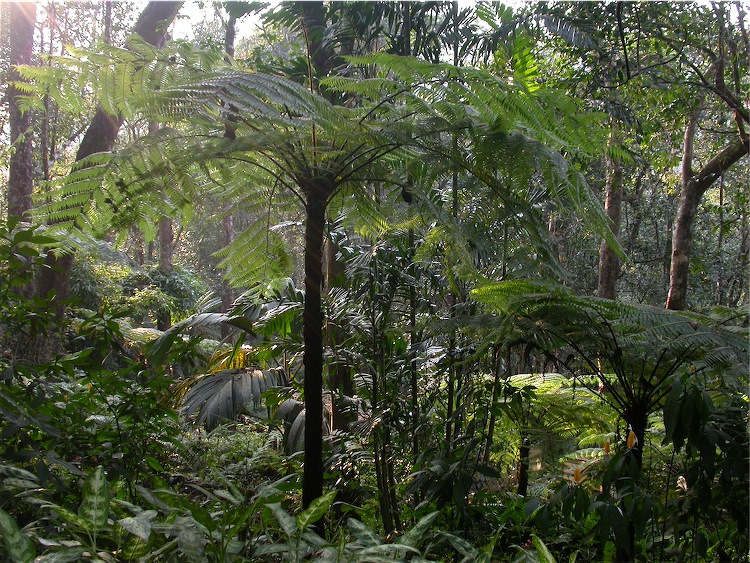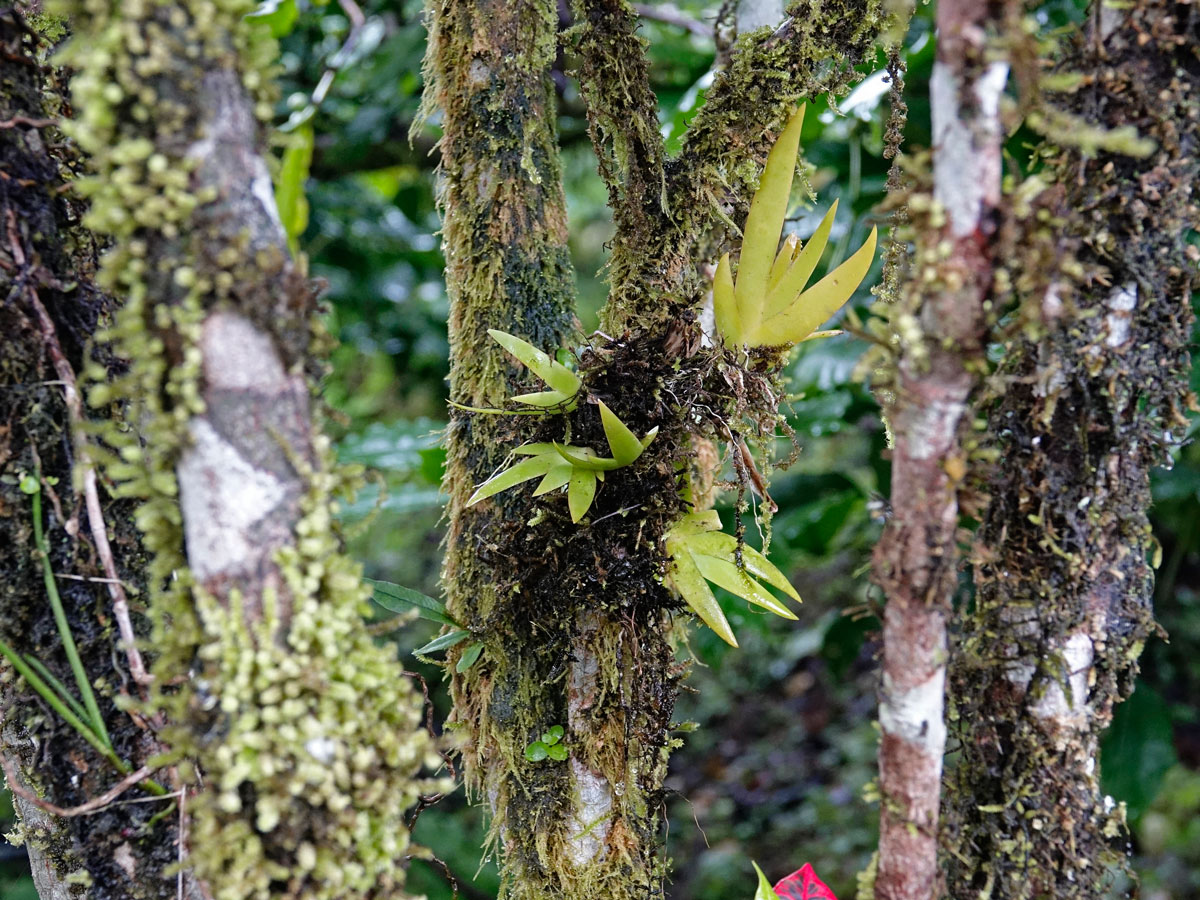A Botanical Sanctuary
A gurukula is a community of apprenticeship with the Guru. In the Gurukula Botanical Sanctuary, our teachers are plants, animals, the forest as a whole.
This conversation took place at the Gurukula Bontanical Sanctuary, in the Western Ghats mountains, Kerala, India. It has been edited for clarity.
 Can an individual who just sees take action? And what does it take to see? You see an accident on the street, you respond. That is how we have done it; we have responded immediately; we didn't wait. We learned by doing and by living with these plants. Here, plants come first.
Can an individual who just sees take action? And what does it take to see? You see an accident on the street, you respond. That is how we have done it; we have responded immediately; we didn't wait. We learned by doing and by living with these plants. Here, plants come first.
We are working to rescue plants across 1200km of the Western Ghats and we're trying to collapse that into the space of the Sanctuary, for this is a refuge for all these plants that come from different parts of the mountains, so something of their original habitat has to be recreated here. Across 1200km you come across rocky habitats, open habitats, riparian habitats, swampy habitats, and so on. All these different conditions that plants like, how do we bring them into this tiny place? As gardeners, that is what we do, we play with all these little features.

When 93% of the biome is gone, everybody needs attention. For us, every species is really on the red list. We have to prioritise in some way, but the idea is more diversity, more abundance or fertility, bringing all the ecosystem properties back – and that can only be done with the full complement of species. That is what we are tending to here: all the life forms, not just the trees or the orchids. The body of the land is all these beings; without all of them, you don't have the whole. All these creatures create all these processes, create all these flows and dynamic exchanges, and that creates this place. The forest is all these beings.

For us, the question is: where does the garden end and the forest begin? And it is hopeful that the part of the land in an intermediate stage (between forest and the “emergency ward”) is gaining strength. A part of the land that has matured and where there is not a lot of looking-after any more, and there are all these creatures, spores, and seeds, flowing back and forth between what is completely undisturbed and the high-intensity propagation areas of endangered plants coming in.
The Kerala rainforest may be under all sorts of pressure, but at the Gurukula Botanical Sanctuary the presence of life is still almost overwhelming.
—Theun Karelse in How to walk like something is around you
When you have traveled in these mountains and you see a huge burned-out area and you find this one plant, bring it back, and nurture it, and you see it doing well, there is a whole deep thing happening there. The way the gardeners bring that plant back is really beautiful. It is search-and-rescue, but it is also something else. It's the recognition of an imperative. And that has not come from a rational understanding. That comes from seeing that burned out place. Seeing that this being requires our support. So what can you than do to heal that? So we have done that plant by plant, by plant, by plant. And this place has come into being plant by plant, by plant.
Modern humans have trapped themselves in reflections of their own making. We are mostly only looking into some artefact or product that we have made. It is either a direct human invention or something that has been encapsulated in images or ideas or whatever, but (pointing at the forest) these are not ideas, these are beings. They are their own intelligences, and they are informing us right now. Modern humans are surrounded by dead things and dead diversity, while we are surrounded by living diversity. There is a fundamental difference there.
 Sruti “planting” epitphytic ferns and orchids in a tree in the Shola (the cloudforest section) at the Gurukula Botanical Sanctuary
Sruti “planting” epitphytic ferns and orchids in a tree in the Shola (the cloudforest section) at the Gurukula Botanical Sanctuary
❧